The triumph, tragedy and bizarre secrets of one of the 20th century’s most prominent figures.
Podcast: Play in new window | Download
Subscribe: RSS
The triumph, tragedy and bizarre secrets of one of the 20th century’s most prominent figures.
Podcast: Play in new window | Download
Subscribe: RSS
Georg Elser’s failure is one of the most remarkable stories in European history.
The contrast between Adolf Hitler and Georg Elser could not have been more dramatic. Hitler was a fanatically driven over achiever who had overcome his lower middle class background, lack of education and early personal failures to become one of the most charismatic and extroverted political figures of the twentieth century. Elser was a simple woodworker, with an intermittent work history, an unmarried loner with little interest in politics or the world beyond the small towns of Southern Germany where he lived and grew up. But, on November 8, 1939, the lives of these two individuals would intersect in a manner that today seems inconceivable.
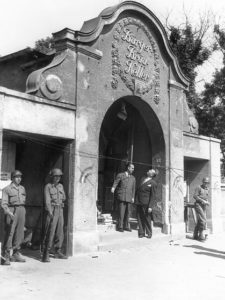
November 8 was an important date in the history of Nazi Germany and the life of Adolf Hitler. It was on this date in 1923, that Hitler rushed into Munich’s Burgerbraukeller beer cellar with a group of followers and attempted to disrupt a speech of one of the political officials charged with ruling the German state of Bavaria. Behaving theatrically, Hitler leapt onto a table, fired a pistol shot into the air and proclaimed “The national revolution has broken out! The hall is filled with six hundred men, nobody is allowed to leave!” Hitler’s poorly conceived revolt would end the next day, after a march of Hitler and his followers was fired upon by soldiers and police in Central Munich.
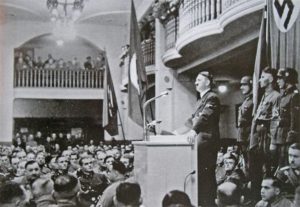
Less than ten years after his release from prison, Hitler would be named Chancellor of Germany on January 30, 1933. To commemorate the success of the Nazi party and the sacrifice and struggle of what he called his Alte Kampfers, “Old Fighters” who had been with him from the beginning, Hitler began a tradition of addressing this group at the site of the start of the Nazi political struggle, the Burgerbraukeller, annually on November 8.
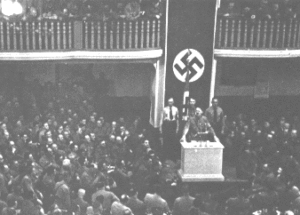
Despite the outbreak of war on September 1, 1939 would be no different. On November 8, Hitler flew with his entourage from Berlin, landed in Munich and in the early evening proceeded to the raucous hall jammed with Hitler’s most fanatical adherents. Shortly after eight PM he proceeded to the dais in the reception hall, a giant Swastika flag draped on the massive pillar behind him framing Hitler dramatically.
Podcast: Play in new window | Download
Subscribe: RSS
Mildred Fish Harnack, the Only American Female Ever Executed For Espionage by Nazi Germany
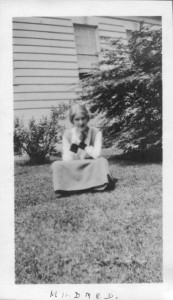
Mildred Fish Harnack was born in Milwaukee, Wisconsin on September 16, 1902. Her parents, descended from a New England, protestant background, separated when Mildred was a teenager and she was primarily raised by her mother. After her father’s death in 1918, the family relocated to the Washington, DC area but Mildred returned in 1921 to attend the University of Wisconsin.
While a student at the University, Mildred met a German Rockefeller scholar, Arvid Harnack, in 1926. In September they were married and Mildred continued with her studies and taught literature. Having been immersed as a youngster in the deeply German immigrant culture of Milwaukee and subsequently exposed to the radical political atmosphere of Madison, Mildred’s attraction to a German intellectual would be completely predictable. From the very beginning, the Harnack’s marriage was atypical. Although Harnack’s uncle was the esteemed German theologian Adolf Von Harnack, Arvid’s father also died when he was a teenager and his immediate family was struggling with the disastrous German economy of the twenties. When Harnack’s academic stipend ran out in 1928, he was forced to return to Germany. Mildred Harnack obtained a teaching position at Goucher College in Baltimore and the young couple hoped to reunite quickly.
Horst Heilemann, a young member of this German cryptology unit was also a former student of Harro Schulze-Boysen and regularly socialized with the couple. After Harro confided that he worked with Russian intelligence, Heilemann mentioned that his group had successfully intercepted some communications and identified some Russian agents. When Heilemann returned to his office and reviewed decoded messages he determined that the Schulz-Boysens had been compromised. He unsuccessfully attempted to telephone Harro and was forced to leave an urgent message. Later, when Harro returned the call, instead of Heilemann he got a senior colleague on the line. Confused by the cryptic message he had received, he unfortunately identified himself. Heilemann’s stunned colleague figured out what had happened and immediately informed the secret police. The Gestapo did not want to risk further warnings to other members of the group and Harro Schulze-Boysen was arrested on August 31, 1942. Convicted by a military court, he was hanged in Plotzensee Prison, Berlin, December 22, 1942
Libertas Shulze-Boysen was in the unique position of having access to film footage that was used by the propaganda ministry. She was able to produce photographic copies of atrocities that were being committed against Jews and others on the Eastern Front. Unsuccessful attempts were made to get this information to the West. She was guillotined in Plotzensee Prison, Berlin, December 22, 1942, one hour after her husband was hanged.
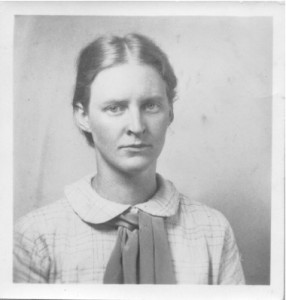
Podcast: Play in new window | Download
Subscribe: RSS